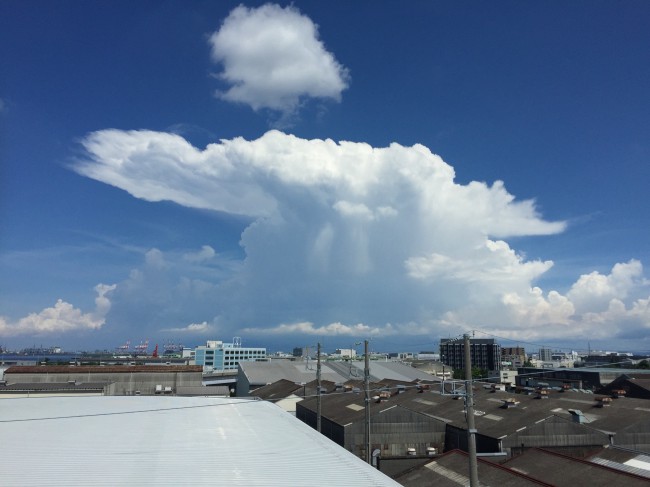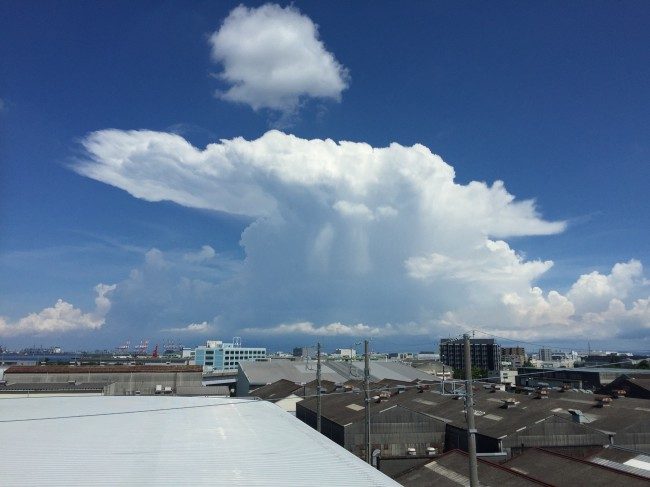
The photo shows cumulonimbus clouds over the Bōsō Peninsula (Chiba Prefecture, southeast of Tokyo), as seen from the JAMSTEC Yokohama Campus. These clouds often occur on hot summer days and their tops can easily reach 10 km high. We had a lot of hot days here in Yokohama but slowly summer is running out of steam, so what is the outlook for fall? According to the SINTEX-F prediction most areas around the globe will see warmer than average surface temperatures. The tropical Pacific will be marked by weak La Niña or La Niña Modoki conditions. In the Indian Ocean the negative Indian Ocean Dipole (IOD) will persist. The influence of this configuration on regional rainfall will be discussed below.
Air temperature and rain forecast for the period September through November
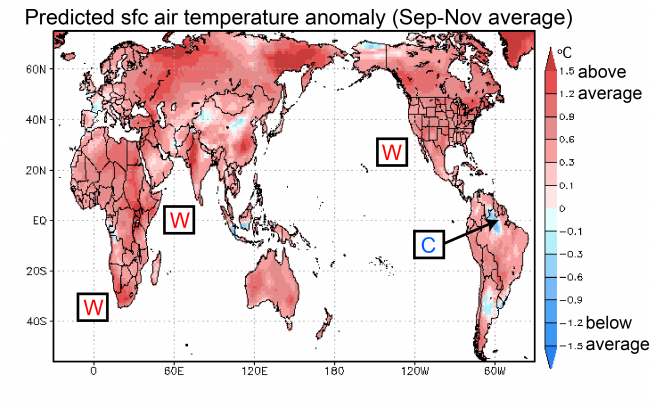
Warmer than average temperatures are expected in many areas of the world (Fig. 1). One of the few exceptions is northern Brazil.
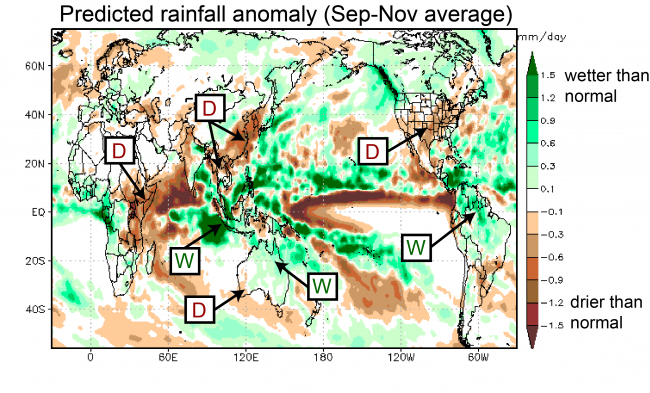
The SINTEX-F prediction indicates drier than normal conditions over the US, East Africa and large portions of East and Southeast Asia. Above average rainfall is expected over northeast Australia, tropical South America and Indonesia, among others.
As for Japan, the period September through November is forecast to be warmer than usual. Except for parts of Kyushu, rainfall is predicted to be above average, particularly during September and October. Please keep in mind, however, that forecast accuracy for mid and high latitudes is limited.
Ocean temperatures for the period September through November
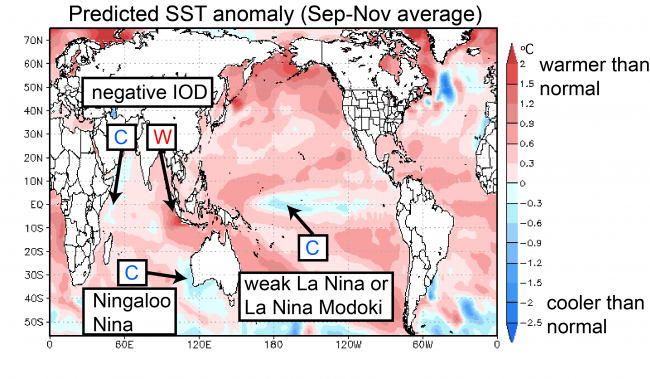
In difference to daily weather fluctuations, seasonal climate variations are strongly influenced by changes in sea-surface temperatures (SSTs). Particularly in the tropics, where the SSTs are warmer than in other regions, even small changes in temperature can produce far reaching effects.
According to the SINTEX-F predictions, weak La Niña or La Niña Modoki conditions will continue in the tropical Pacific during fall (Fig. 3). A look at ocean temperatures down to 200m (ref. NCEP/CPC) suggests that temperatures are significantly lower than average over the whole equatorial Pacific. In spite of this, SINTEX-F does not predict a strong La Niña or La Niña Modoki. This may be due to the SINTEX-F initialization method, which only uses SSTs as input. However, even models that do initialize with subsurface ocean temperatures predict similarly weak La Niña conditions (ref. IRI ENSO forecast). Due to the substantial cooler than normal ocean temperatures below the surface, all of these predictions should be treated with caution.
In the Indian Ocean, IOD conditions prevailed in July, with warmer than average SSTs in the east and cooler than average SSTs in the west (ref. NOAA/PSD). The IOD is expected to persist in fall and this likely contributes to the forecast of drier than normal conditions over East Africa and wetter than normal conditions over Sumatra and Java. Furthermore, SSTs off the southwestern coast of Australia are predicted to be cooler than normal. This pattern, called Ningaloo Niña, is one of several so-called coastal Niño/Niña phenomena around the world. Due to the Ningaloo Niña, rain over southwestern Australia may be lower than usual in fall.
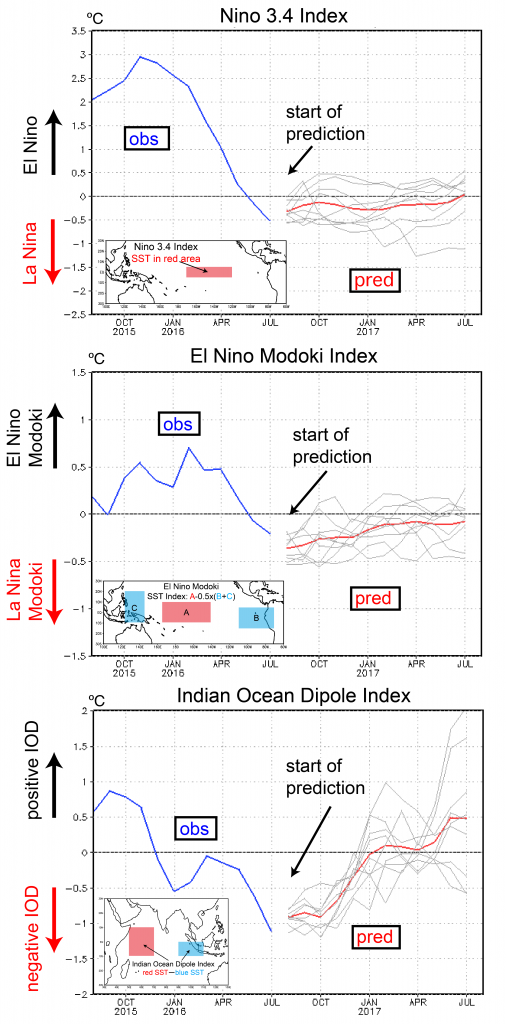
Finally, let’s look at how conditions in the tropics will develop over the coming 12-month period. Figure 4 shows three indices that characterize the state of the tropical Pacific and Indian Ocean. Both the Niño 3.4 and Modoki indices are predicted to stay slightly below zero for the remainder of the year, indicating weak La Niña or La Niña Modoki conditions.
The IOD index is predicted to stay below -0.5 ºC from August through November, which suggests that negative IOD conditions will continue. From December onward, the negative IOD will gradually decay.
It remains to be seen how the combination of a weak La Niña (or La Niña Modoki) and a moderate negative IOD will influence climate across the globe in the coming months.

